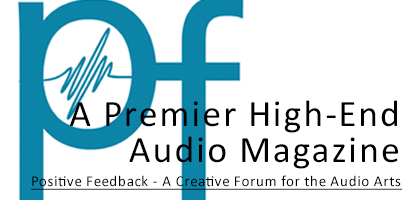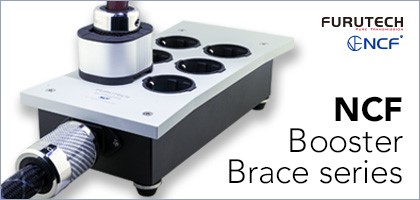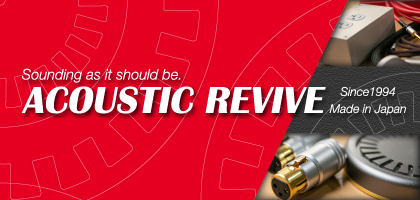SIMPLICITY OFFERS A LOT OF POSSIBILITIES
⌈ About the fact that what is simple is better than what is complex. But also about the fact that thoughtless simplifying is a mistake. ⌋
 LISTENING TO MUSIC SHOULD BE A SIMPLE MATTER. It is, after all, about one of the basic ways of spending free time that humans have indulged in for a very long time, probably since the moment they became self-aware. Although the oldest known instrument, a flute found in what is now Germany, is about 35,000 years old, we already know that other, even simpler versions must have existed before it. LISTENING TO MUSIC SHOULD BE A SIMPLE MATTER. It is, after all, about one of the basic ways of spending free time that humans have indulged in for a very long time, probably since the moment they became self-aware. Although the oldest known instrument, a flute found in what is now Germany, is about 35,000 years old, we already know that other, even simpler versions must have existed before it.

⸜ HIGH FIDELITY’s setup A.D. 2024
And I'm talking not only about Homo sapiens, but also about our relatives, particularly the Homo neanderthalensis. Who, by the way, had a much more complex and elaborate culture than our ancestors. And they were more concerned with hygiene. In 2009 in the Spanish province of Murcia, artifacts from 50,000 years ago belonging to this species of people were found, and pigment analysis suggests the use of body cosmetics 10,000 years before the footprints of our direct ancestors.
But let's get back to the point. So the act of listening to music seems simple - we sit down in front of a performer, usually accompanied by other people, and listen. There may be more performers, by the way; each may play a different instrument to form a musical group, or, once the threshold of complication is crossed, it becomes an orchestra. But even when the act of playing is formalized and framed as - for example - a philharmonic, this basic principle of "exchange" between participants remains unchanged.
If we lived in an ideal world, a world of ideas, then music played live and music recorded would be the same. That is, the process of recording and reproduction would be perfectly transparent. The context of listening would change, of course, since recording is usually listened to alone or in a narrow group of friends, and live performances among many people, usually strangers, but the elements that make up a recorded work, i.e. performance → recording → playback, would be indistinguishable from each other, and could be interchangeable. However, this is not the case.

⸜ Signal sources are Ayon Audio SACD player (on top) and Lumin T3 files (below); plus Acoustic Revive anti-noise plugs, Verictum filters, Siltech and Acrolink power cables, anti-vibration feet, Nordost noise modulator
And this is because each of the components of the three is a separate category of art. It can be argued that performance is the most important one, that later on the scale of importance would be the recording, and that playback is the least important among them, but it would be wrong. After all, if we don't take care of the playback system, both musicians and sound engineers can do their best and the listener will still not understand their intentions. Because a low-quality or poorly put together playback system will put a curtain in front of us, and only occasionally something will get through it, but it will cut the listener off from what was really going on at the time.
And if so, the system must be ˻ a ˺ of the proper class and ˻ b ˺ well put together. And that, it turns out, is a problem. I read so many times in emails from questions about particular devices just because they were available on promotion or at a "bargain" price. I could offer long lists of the most sensible combinations of component one could start their search with, and still in the end it turned out that they couldn’t resist a bargain. But then, it's the rule, after some time it turned out that "it doesn’t sound so good" and the question arose "what could be done about it?". And it is no longer possible to do much, because it would be necessary to build a completely new system. And the story would repeat itself with a search for different bargains.
However, one can adopt one basic principle, accompanied by an appendix. It would read: MAKE IT SIMPLE, and the appendix would modify it - referring to Einstein - BUT WITHOUT OVERSIMPLIFYING. The point is that in audio, the simpler, the shorter the signal path, the less opportunity for distortion. However, every electronics engineer knows that this principle is somehow internally flawed, because every system, including an audio system, requires a certain degree of complexity to fulfill its purpose, that is - in our case - to allow us to communicate (emotionally) with music.

⸜ Split amplifier consisting of Ayon Audio preamplifier (two boxes, feet and anti-vibration platforms, anti-noise plugs, Nordost modulators, Acoustic Revive power cable) and Soulution power amplifier (plugs, modulators, power filters, Acoustic Revive power cable)
The simplest possible system is a smartphone with headphones. However, if we want something more, we need to expand it. Take, for example, my reference system.
|
It consists of two signal sources, a split amplifier, speakers, and cabling and accessories to minimize noise - triboelectric, induced by vibrations, and electromagnetic. It seems simple, and only these two sources and the split amplifier make one wonder for a moment if it's really as simple a system as it seems.
Because, in fact, it's not simple at all (for the sake of clarity of the argument, I omit my headphone and analog "zones"). Two sources are necessary for me, because I use the Lumin T3 file player to listen to music from streaming services before I select the albums I want in physical form. And when I do buy them, I listen to them from an Ayon Audio CD-35 HF Edition SACD player.
And now - both the file and the SACD players could be two-box devices. And they would sound better, as the examples of CH Precision or JCAT devices show. The system would then become sonically better, but also much more complex, because to the devices themselves you have to add cabling, anti-vibration and noise reduction systems, etc. And that means a lot more places to go wrong and physical space that would have to be dedicated to them. That's why I decided to stay at this stage. I'm not saying forever, but for the time being - this is what it looks like.

⸜ My speaker system, because it can not be called otherwise: Harbeth speakers, Acoustic Revive stands, Pro Audio Bono feet, SPEC filters, Acoustic Revive anti-vibration platforms, Siltech cables
The thing that I intend to simplify in the near future, on the other hand, is a streaming system. I'm talking about buying another component - a paradox! - to simplify the setup - the L2 from Lumin, which is a NAS server and LAN switch in one. This will allow me to dispense with an external NAS and at the same time shorten the signal path. On the other hand, both my file player and SACD are, after all, "encased" in accessories. And it's Divine Acoustic Galileo anti-vibration feet, and it's Acoustic Revive plugs and Verictum noise-reducing filters, and it's a Nordost noise modulator. However, I came to this point gradually, step by step, and the heart was always the signal source.
A split amplifier, on the other hand, has been my choice "forever". And this is because the preamplifier is the true heart of the system. Even if it's integrated with a player or "DAC", including when it's simply an attenuator and not an active preamplifier, it's the one that gives the whole thing the final "touch". The power amplifier, on the other hand, allows me to freely test other devices of this type and is responsible for driving the speakers. My only weakness would be to buy another of the same kind and use them as monoblocks. But that would be an additional complication, so the stereo version of the Soulution 710 completely satisfies me.
And finally the loudspeakers. Seemingly - a simple matter. They are listening monitors from the BBC school, model M40.1 from Harbeth. In reality it is not so simple. For here they stand on stands made for me by Mr. Ken Ishiguro of Acoustic Revive, which are a complex mechanical system. Their class is raised by Pro Audio Bono Ceramic 60 SN anti-vibration feet, and they were also greatly helped by SPEC Real-Sound Processor RSP-AZ9EX filters with Western Electric cables and Oyaide plugs. What's more, these filters stand on Acoustic Revive anti-vibration platforms. So - the core is simple, but everything around is quite complex.
And then, there's the power supply, which consists of Acrolink, Siltech and Acoustic Revive cables, the latter's power strip and filters, and - this is important! - Graphite Audio Classic 100 Ultra anti-vibration platform. In turn, there are Acoustic Revive anti-vibration stands under the cables, and the system stands on a Finite Elemente rack. So from a simple system it has become complex. At least it seems so.

⸜ Power system: Acrolink, Siltech and Acoustic Revive power cables, AC power strip and filters of the latter, and Graphite Audio Classic 100 Ultra anti-vibration platform
For if we look at it again, we can see see something like a rhizome, with a stem (power cables and sources) and branches (cables) on which we can find fruit (speakers), with a node in the form of an amplifier. This rhizome evolves over time and is not something permanent, although its overall appearance does not seem to change. It is as simple as it gets, but also complex enough to fulfill its purpose.
Your systems could be much simpler, after all, a good integrated amplifier with a CD or file player plus speakers may be the best choice. One, it's relatively inexpensive, and two, it doesn't take up space. But also such a system can evolve - you only need to recall what I wrote about the reference system to see what possibilities for development open up. Its basic composition, however, will remain the same - source/amplifier → speakers.
How complex a given system is to be should be determined by experience and the goals we set for it. But it is always worth asking ourselves whether we really want to complicate it. Or maybe just the opposite, maybe giving up a component or "integrating" few of them will allow us to achieve a better sound.
Having said that I will add that on the other hand development is not something to be afraid of . As long as it makes sense. And that is exactly what I want to wish you: as much sense as possible in the development of an audio system, in the brand new, not yet consumed 2024. ●
WOJCIECH PACUŁA
Chief editor
|
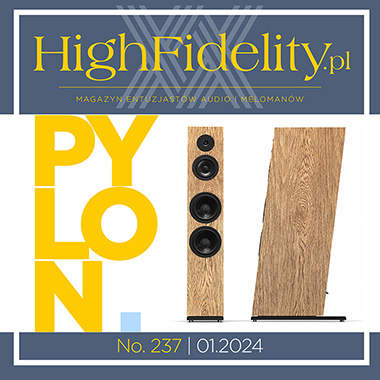














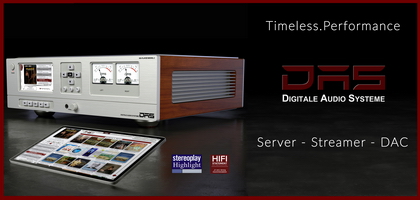
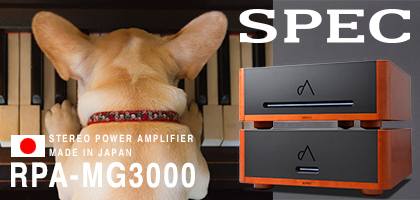
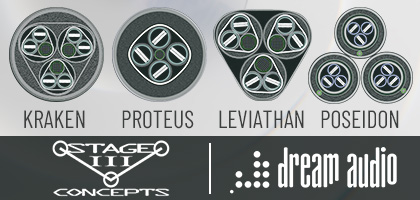
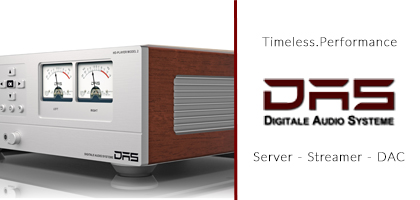
 LISTENING TO MUSIC SHOULD BE A SIMPLE MATTER. It is, after all, about one of the basic ways of spending free time that humans have indulged in for a very long time, probably since the moment they became self-aware. Although the oldest known instrument, a flute found in what is now Germany, is about 35,000 years old, we already know that other, even simpler versions must have existed before it.
LISTENING TO MUSIC SHOULD BE A SIMPLE MATTER. It is, after all, about one of the basic ways of spending free time that humans have indulged in for a very long time, probably since the moment they became self-aware. Although the oldest known instrument, a flute found in what is now Germany, is about 35,000 years old, we already know that other, even simpler versions must have existed before it.





